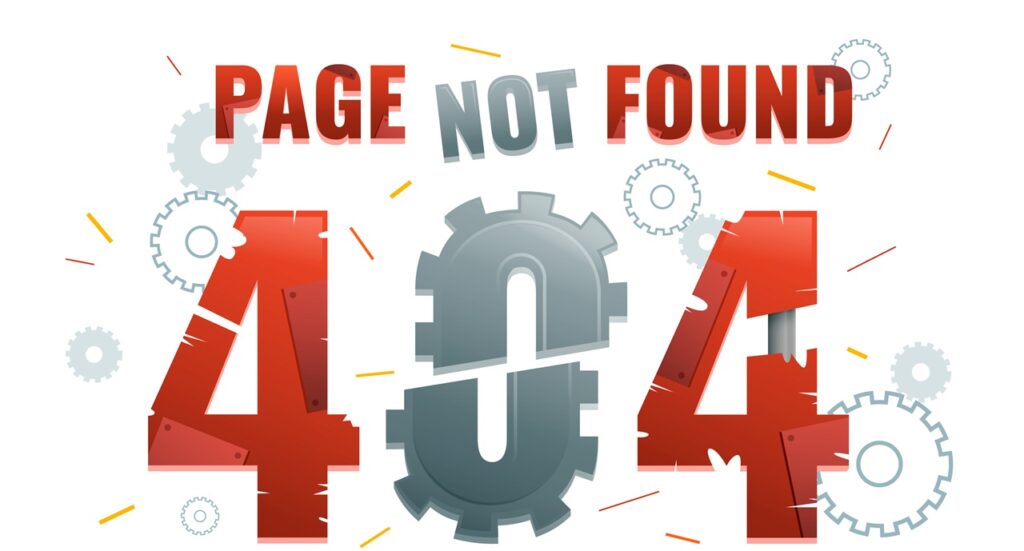What Are Broken Internal Links
A broken internal link is when you click on something inside a site and land on nothing. Maybe the page got removed, maybe the URL changed, or maybe someone just messed up the link. Either way, it takes you to a dead page.
For visitors, it’s frustrating. For Google, it looks sloppy. Internal links are supposed to guide people and connect your content together. When they don’t work, the whole site feels weaker.
That’s why even teams doing link building services for SaaS don’t just check backlinks from other sites. They also make sure every link inside the site works. Clean paths keep everything running smoothly.
How Broken Internal Links Affect SEO
A broken link doesn’t just annoy the person who clicks it. It also sends the wrong signals to Google. Here’s what really happens when you leave them unchecked:
- Google can’t finish crawling — bots move through your site link by link. If they hit a dead end, they stop. Important pages can get skipped, which means they never show up in search.
- Page strength leaks away — every link passes some value to the page it points to. When that link is broken, the value just disappears. Over time, the whole site feels weaker in search results.
- People lose patience — nothing kills trust faster than a 404. Instead of hunting for the right page, most users just leave. That drives bounce rates up and signals to Google that your site isn’t giving people what they want.
- The brand looks sloppy — broken links make it seem like nobody’s paying attention. Even if your product or service is good, visitors may assume the business is careless.
This is why teams that run white-hat link building services always check a site’s own links too. Backlinks matter, but if your internal structure is full of holes, you’re wasting that effort.

Tools to Find Broken Internal Links
Spotting and fixing broken links seo isn’t guesswork, it’s process. A few reliable tools can help:
- Google Search Console highlights 404s straight from Google’s crawl data. It’s free and a quick way to see problem areas.
- Screaming Frog crawls your site and lists every broken link. Even the free version handles 500 URLs, enough for smaller audits.
- Chrome Dev Tools work for quick manual checks. Reload a page with the console open, and you’ll see broken paths flagged instantly.
- Analytics platforms like GA4 can show which error pages visitors actually land on most often.
- SEO platforms such as Ahrefs or Semrush include broken link reports inside larger site audits.
We at Novo use these same tools daily. Check our guide to broken link building strategies, we break down how to not only find dead links but also turn them into opportunities — from replacing outdated URLs to building fresh, high-value connections. That’s the level of detail we bring when auditing internal structures for clients.
Step-by-Step Fixing Process
Here is a short instruction on how to fix broken internal links, and this is less about quick patching and more about building a system that lasts.
Identify All Errors
The first step is always discovery. Run a full crawl with tools like Google Search Console, Screaming Frog, or Ahrefs. These will show you exactly which links lead to 404s, redirects, or empty pages. At Novo, we don’t just stop at one scan. We compare crawl data with analytics to see which broken links users actually hit. That helps separate the “noise” from the problems that really matter.
Prioritize Important Pages
Not every broken link has the same impact. A dead path on your homepage, navigation, or high-ranking landing page damages SEO and user trust far more than a link hidden in a three-year-old blog post. Prioritization makes the fixing process efficient. Novo typically starts with revenue-driving pages — product, service, or conversion paths — before moving to secondary content. This keeps the business impact front and center.
Choose the Right Fix
There isn’t a single way to work on an internal link errors. The fix is situation-dependent. If the page still lives under a new URL, updating the link directly is the cleanest remedy. When the previous page is removed, a 301 to the most relevant page maintains link equity. The anchor itself should stay relevant to the page it now points to — sending “pricing” anchors to a blog post, for example, confuses both users and search engines. If no suitable page exists, a 301 redirect to the homepage is safer than leaving a dead end, and the internal link can be reintroduced later in a different section of content where it fits.
Occasionally, creating new replacement content is the wisest option. That’s where Novo brings value to the table: we don’t merely “fix” the link, we ensure the replacement supports both SEO and business objectives.
Keep a Record
Writing down repairs may seem boring, but it’s worth it. Keeping a simple record of busted URLs, the repairs, and the dates simplifies the next audit and allows you to identify repeating patterns. It’s for the clients.
As such, broken internal links are no longer a periodic discovery but a predictable, controllable component of site maintenance. Novo makes this process a standard component of each engagement. Whether we’re running link building outreach campaigns or ongoing SEO support, internal links are treated as core infrastructure. A clean internal structure makes every backlink stronger, every page easier to find, and every user more likely to stay.

Preventing Future Broken Links
The easiest way to manage internal linking issues is to stop them before they start. A number of these daily routines can turn your site into a rock-solid one:
- Perform frequent audits — plan crawls once a month or a quarter depending on the site’s size. It helps to identify issues early.
- Set redirects right away — when deleting or relocating a page, include a 301 redirect so that users and crawlers won’t end up at dead ends.
- Check links during updates — most errors come from small typos or outdated URLs added while editing content. Testing them before publishing prevents trouble.
- Keep a URL record — having a basic record of your key pages and current URLs helps minimize errors when linking to other parts of the site.
- Automate tracking — advanced SEO suites can track new broken links automatically and notify you in real time.
They will not completely go away, but these are bad practices to deal with them and to keep your site architecture tidy for visitors and search engines.
Broken internal links may look like small errors, but they gradually hurt SEO, user trust, and site navigation. The solution is consistent maintenance: regular audits, smart redirects, and careful checks whenever content is updated. This keeps your site clean, reliable, and easy for both people and search engines to navigate.A strong structure comes from building connections with purpose. Check out our guide on internal linking best practices, and find out how the right approach makes every page support the next.
